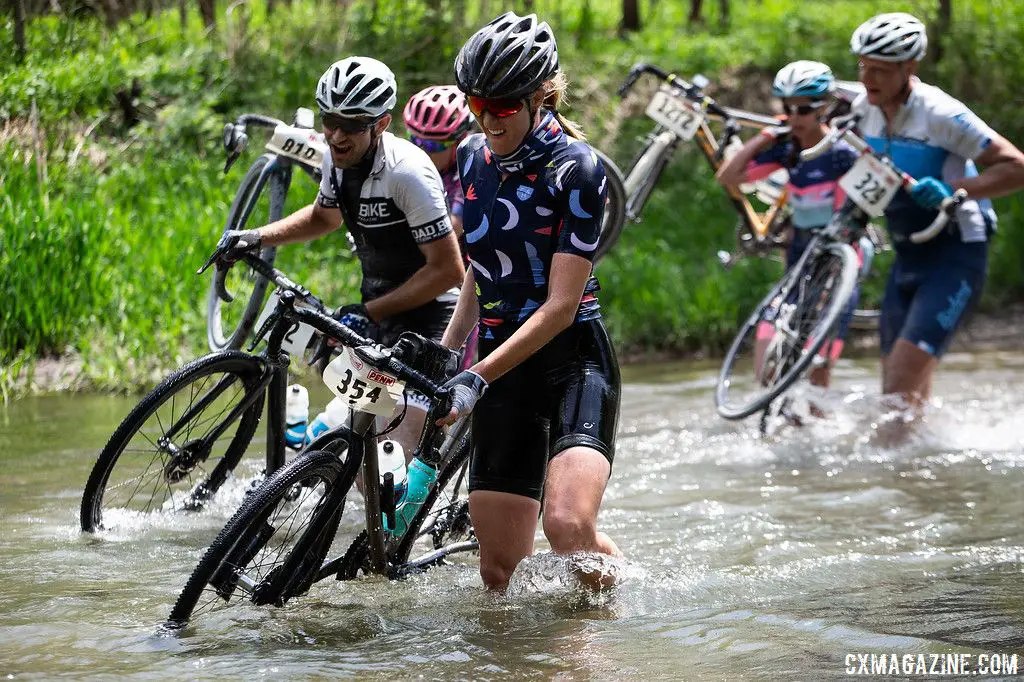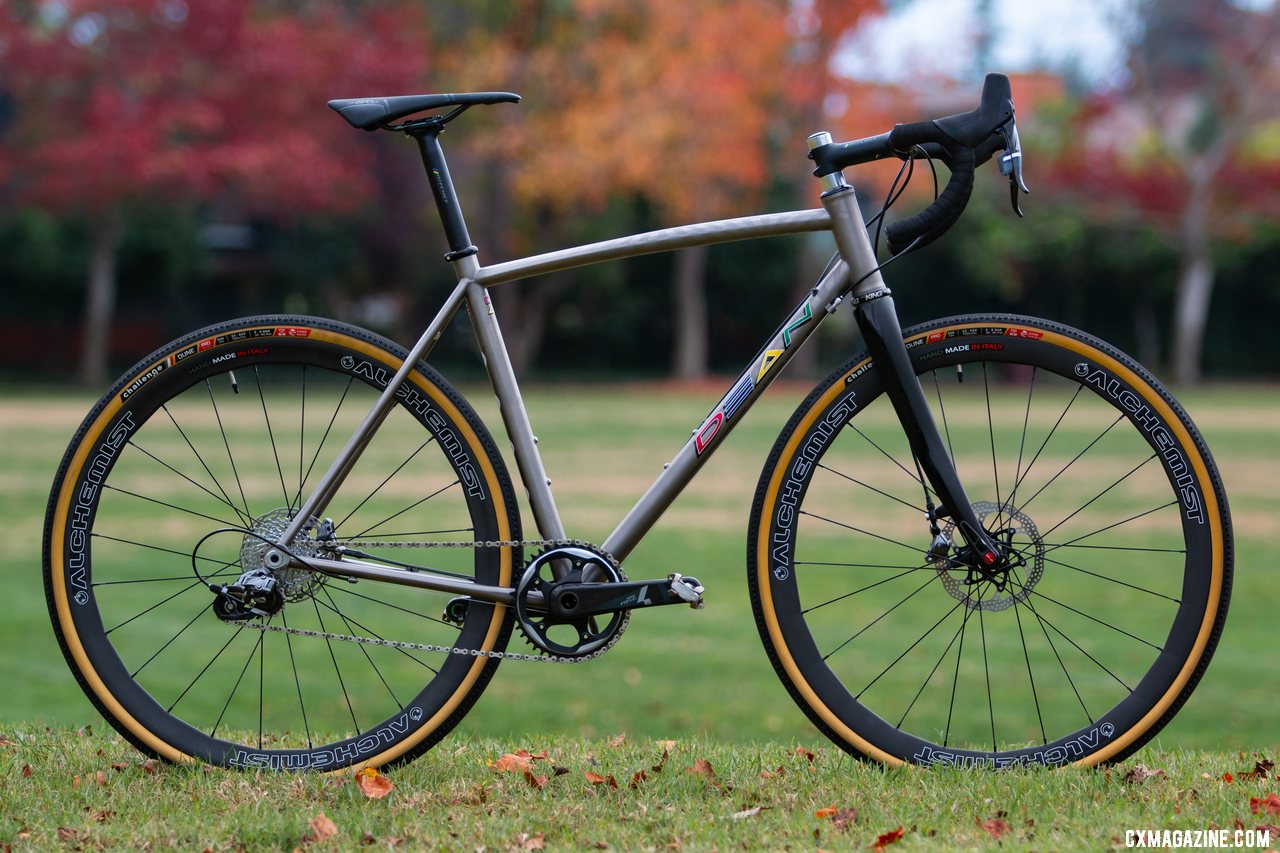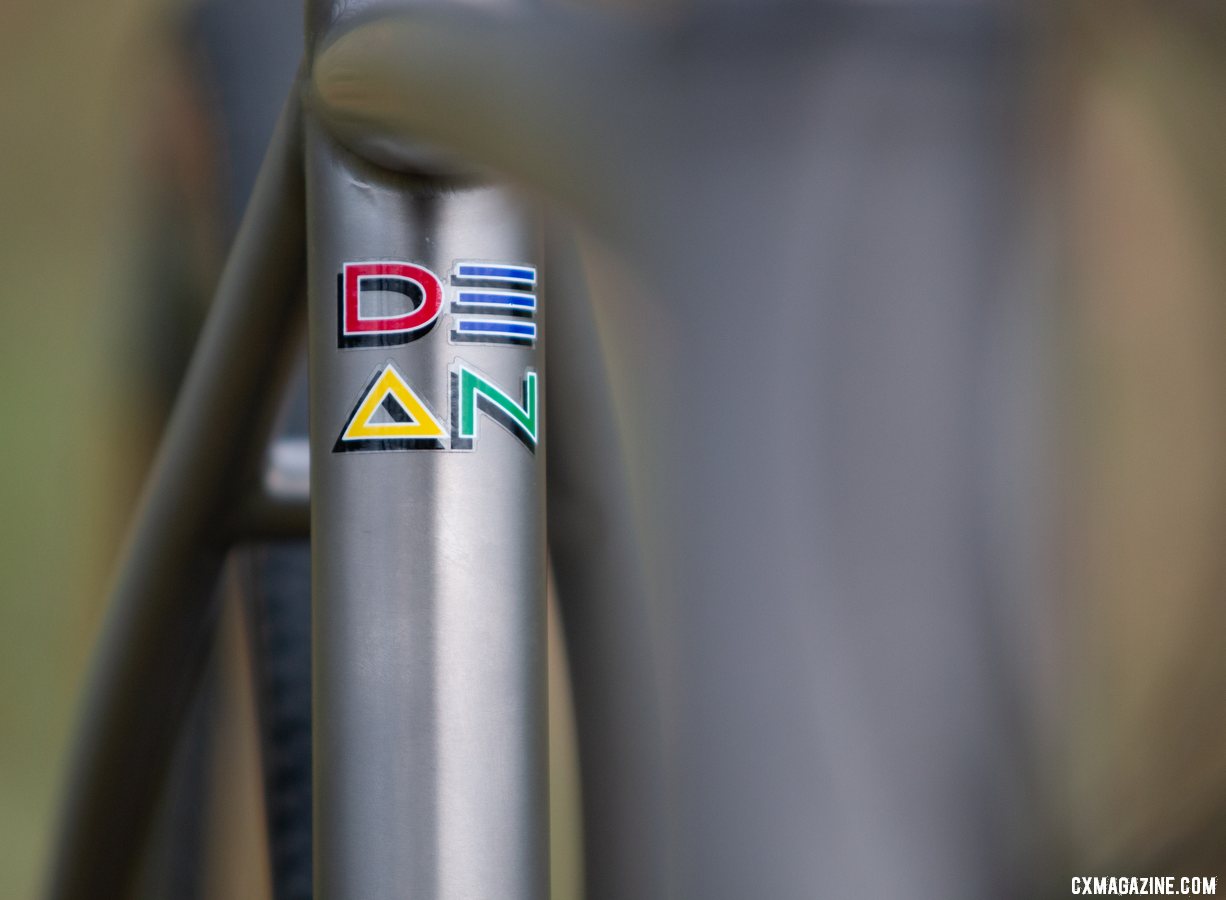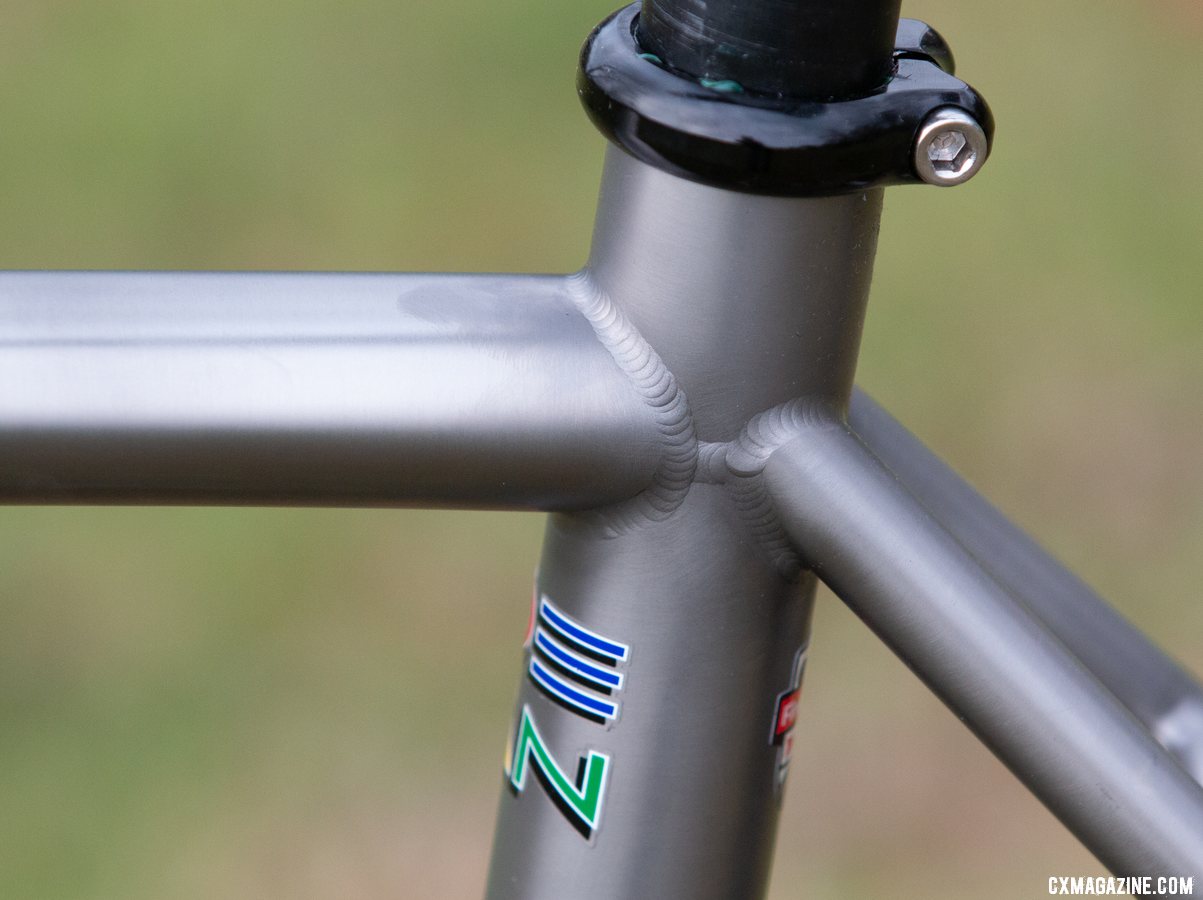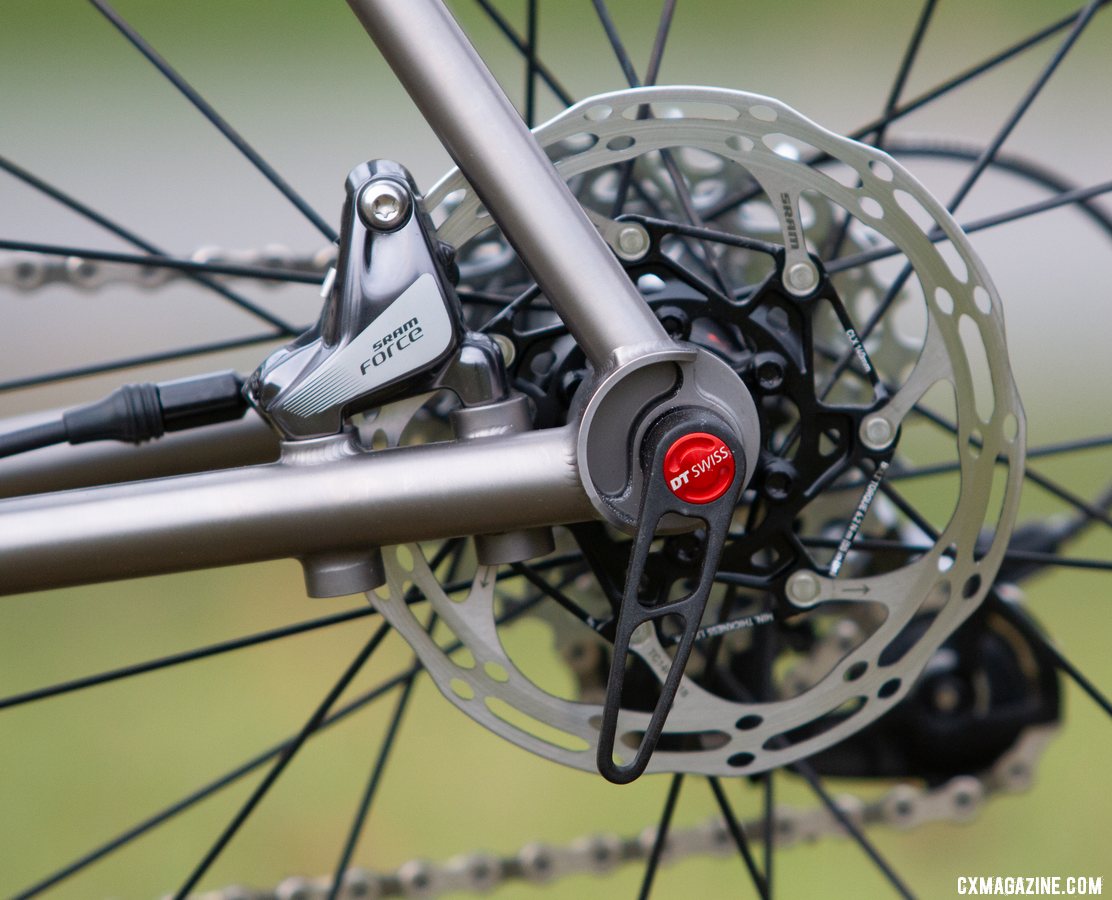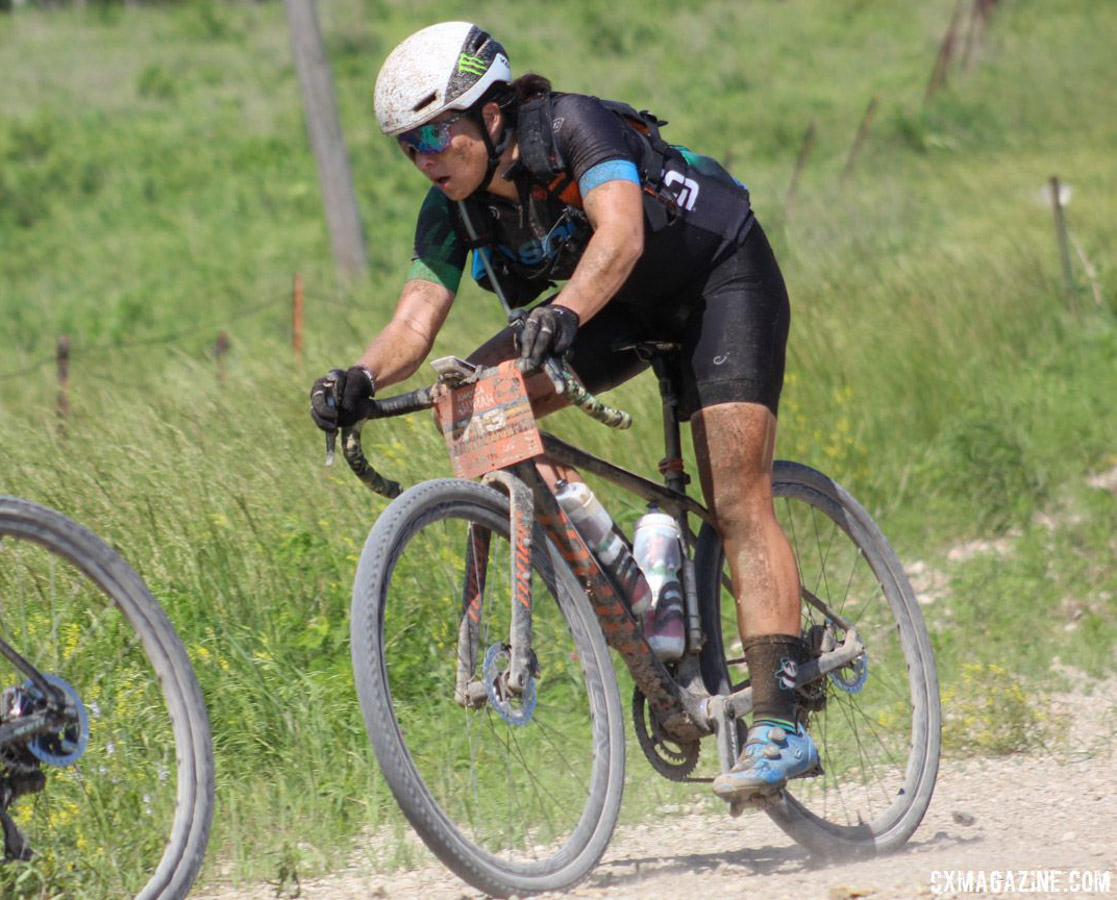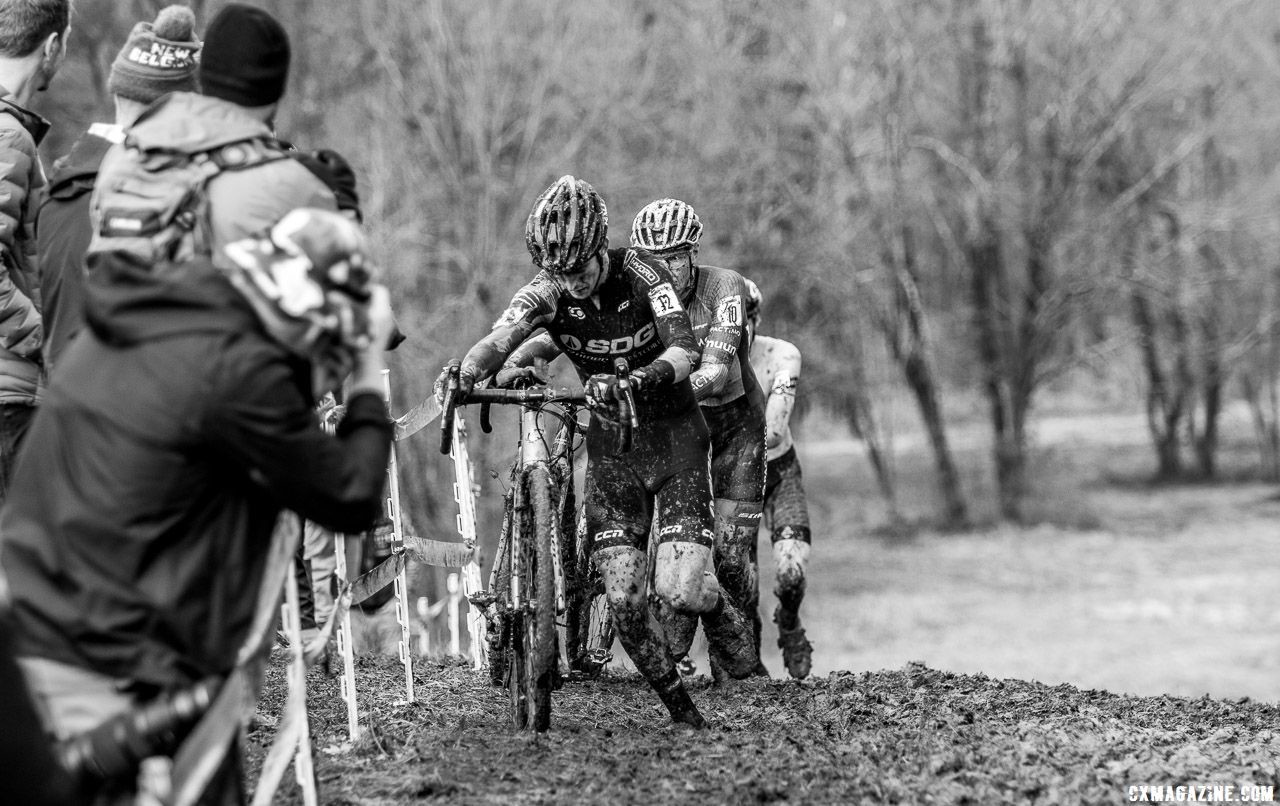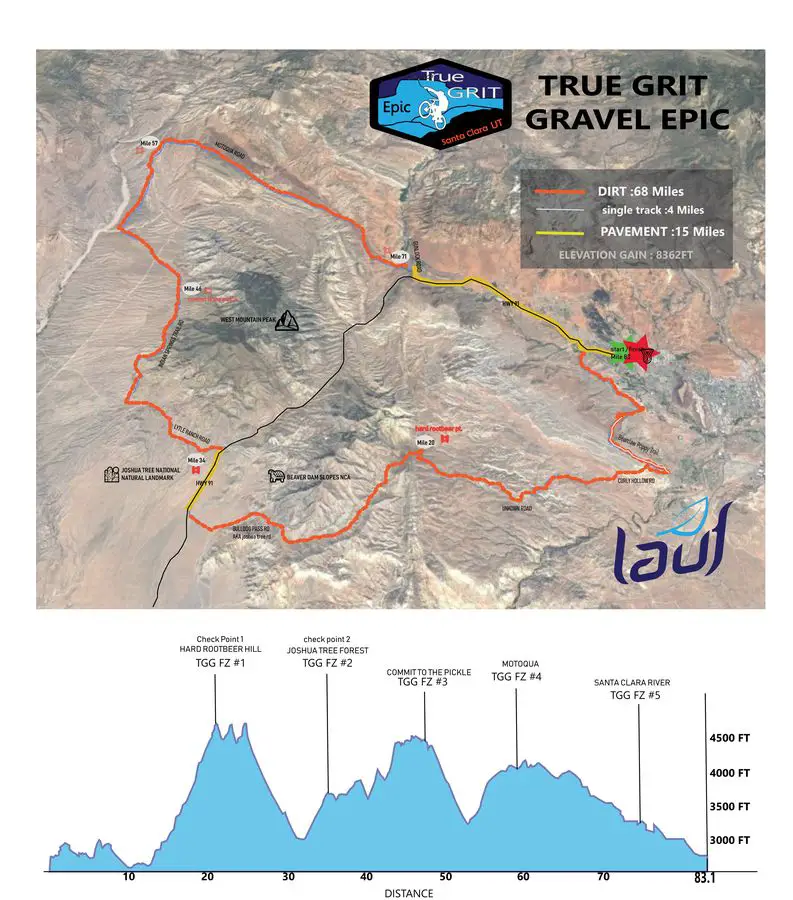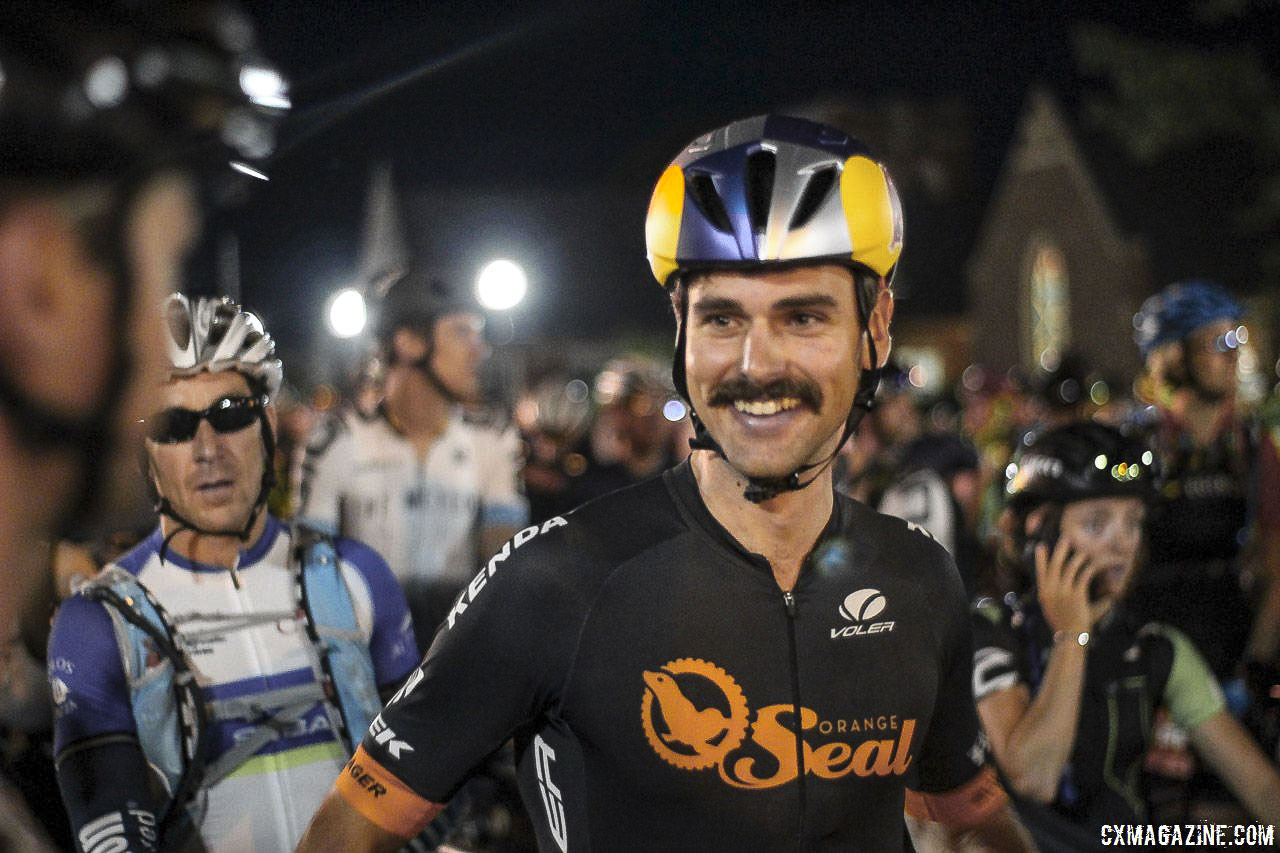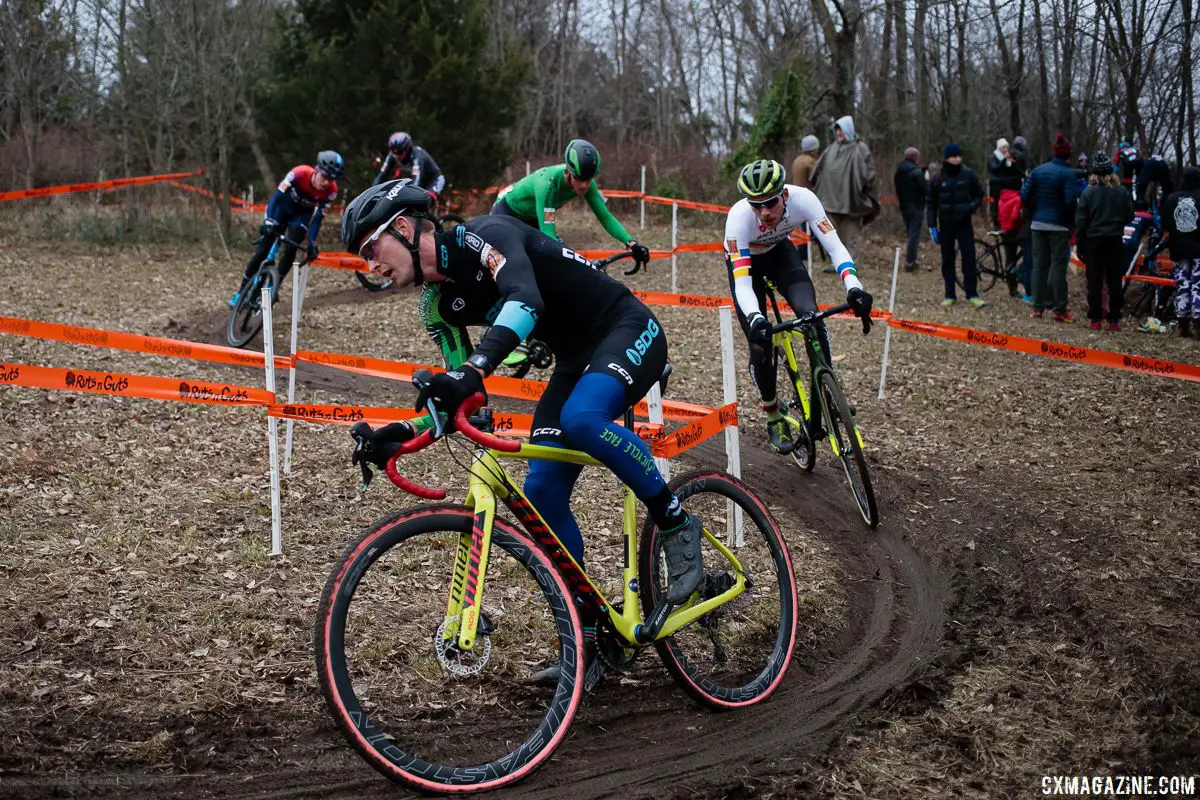
Ask most Midwesterners what they think of Illinois’ terrain, and the word you are most likely to hear is flat. After all, us Wisconsinites affectionately refer to our friends to the south as “flatlanders.”
Most of the state is covered by flat cornfields, but travel far enough south along I-57, past Marion and Carbondale, and you are likely to find the terrain—and thus the riding—starts to change
“People not from our area are always surprised by the awesome landscape and topography we have,” Dirty South Roubaix race director Shawn Moore said. “We don’t have 1000-foot-plus climbs, but the 300 to 400-foot climbs we have are steep and make you earn it. The most common comments at our events are about how beautiful the area is and how people had no idea Illinois had stuff like this.”
It is against that backdrop that the Dirty South Roubaix based out of Alto Pass takes place. This year’s event marked the third edition of the southern Illinois race, although as we will learn, the event has been taking place on a not-timed basis for nearly a decade.
Alto Pass is a small town located southwest of Carbondale, which is home to Southern Illinois University and is the largest urban center in that part of Illinois. The Dirty South Roubaix course passes through Shawnee National Forest and also along the Mississippi River floodplain. As the map shows, there are plenty of hills in Shawnee National Forest, thanks to the southern tip of Illinois escaping the wrath of the earth-scraping glaciers during the last Ice Age.
Perhaps not surprisingly, the forest is home to some great roads. “The gravel scene is really great here,” Moore said. “While it isn’t possible to ride big distances without riding some pavement here and there, there are tons of awesome gravel roads scattered throughout the region. The Shawnee National Forest has hundreds of miles of gravel scattered between the Mississippi and Ohio rivers.”
Situated near Missouri, Arkansas, Tennessee, Kentucky and Indiana, the Dirty South Roubaix now draws riders from several states. However, it started as a local ride among some friends based in the Carbondale area.
“The Dirty South rides started about 9 or 10 years ago by just a bunch of friends getting together to ride gravel roads when the trails were too muddy to ride,” Moore said. “We would post the rides ahead of time in an old school forum for our mountain bike group. The rides started growing and once we started posting to Facebook, they started growing faster.”
By that timeline, saying that the ride is in its third year is a misnomer. It started as a ride, but then because bikes—and well, dudes—it became a race.
“Some of the riders started asking for a race. I really didn’t want to deal with the logistics of a race, but once we thought it through, we thought we would go ahead and give it a shot to see what happened,” Moore said. “The first race was March of 2017. We had 98 riders sign up for the race with only 1 no show. In 2018, we had 166 riders sign up. This year, we had 265. We are very happy with the growth of our event.”
The Dirty South Roubaix ride is an early-March metric century. For those who do not quite have their midseason legs yet, the event also offers a 50km ride.
The 2019 route had roughly 4,000 feet of climbing, making it certainly not flat. Moore said that there are a couple parts of the course that stand out for riders, for reasons good and bad.
After the first climb, the course rolls along a Mississippi River levee. Flat, for sure. But also exposed. “The route then turns onto a levee road for approximately 10 miles,” Moore said. “The first two are paved, then the last eight are rough chunky gravel and totally exposed to wind. The levee is usually the most brutal part of the course.”
Another highlight is a more scenic and fun section. “You then hit the Trail of Tears State Park that has a great rolling gravel road through dispersed rustic camping on a ridge. People love this section. It’s a bit of a climb to get into the park, but once on top, the ridge has great little rollers and a nice fast downhill out of the park.”
As Moore mentioned, like any gravel event there are some paved sections, but for the most part, the course sticks to gravel roads. Similar to the Texas Chainring Massacre, southern Illinois offers a variety of gravel genera. “We have different types of gravel here,” Moore said. “Small limestone gravel, large limestone gravel, red river gravel through the state park and the big climb on the south end of the course and places that the gravel is packed so tight it rides like smooth asphalt.”
Itasca’s Kae Takeshita made the trip from her flatter Chicago-area home down to Alto Pass for the race. “The course had many steep climbs and some hiking trail riding, as well as some flatter pavement,” she said.
Just as southern Illinois is not like say, Chicago, topographically speaking, it is also different from much of the state weather-wise. Carbondale is much further south than St. Louis and a bit more southern than cities such as Louisville and Lexington. The temperatures are usually much warmer than those in Chicago especially during its pre-spring early March date.
Despite temperatures that were in the 60s the last two years, the weather was a bit more chilly in 2019. Although the race avoided becoming an ice skating rink like CIRREM in Iowa last weekend, temperatures still peaked in the low 40s and snow arrived as Saturday progressed.
Looking at how CIRREM went, things probably could have been a lot worse.
The Race
The Dirty South Roubaix offers several categories—Elite, Masters, Singlespeed and Tandem—for both women and men in the 100km distance. There is also a Junior category for the Half Dirty. There are small overall prizes, with the top two overall women and men getting $200 and $100 for first and second, respectively. Third place finishers get their entries covered for next year.
The top finisher for the Elite Women was Anonymous Participant. Yep, the masked rider. The mystery competitor. The known unknown.
We did some “journalism” and learned that Anonymous Participant and Elite Women’s winner was, in fact, Kae Takeshita, the Panaracer / Factor pb/ Bicycle X-Change rider who has seemingly been everywhere on gravel roads so far this winter.
“The energy of the host and staff was warm and welcoming from the packet pick up to the start through the finish line, and they warmed us all up with hot chili loaded potato dinner,” Takeshita said about the race. “Yes, the ‘flavor’ of the race was fantastic.”
Molly Vetter-Smith of Missouri finished second, Carrie Bax of Missouri third, Rhona Ehrhardt of Oklahoma fourth and Monica Foltz put another Show-Me Stater in the top five in fifth.

Dirty South Roubaix Open Women’s podium. photo: Daniel-san
For the Men, it was the Volunteer Staters leading the way. Chase Peeler finished first and Justin Lowe second. Scott Williamson of Kansas finished third, Michael Morgan fourth and Maurice Hessel fifth.
Loreen Mattson and Alice Butler were the lone tandem 100km finishers.
Results for the 100km categories are below. Also see below for a vlog from this year’s event.
Video: 2019 Dirty South Roubaix
Women's Results: 2019 Dirty South Roubaix Gravel Race
| Rank | Category | Name | City | State | Time |
|---|---|---|---|---|---|
| 1 | Open Women | Kae Takeshita | Itasca | IL | 03:50:22.30 |
| 2 | Open Women | Molly Vetter-Smith | Columbia | MO | 04:06:04.10 |
| 3 | Open Women | Carrie Bax | Ashland | MO | 04:26:06.80 |
| 4 | Open Women | Rhonda Ehrhardt | Norman | OK | 04:36:28.20 |
| 5 | Open Women | monica foltz | Cape Girardeau | MO | 04:44:13.10 |
| 6 | Open Women | Courtney Morgan | Madison | WI | 04:51:22.70 |
| 7 | Open Women | Genna Brock | Louisville | KY | 04:51:23.60 |
| 8 | Open Women | Molly Birt | West Lafayette | IN | 05:09:09.40 |
| 9 | Open Women | Katie Ancell | Carbondale | IL | 05:12:31.20 |
| 10 | Open Women | Jillian Carr | Lafayette | IN | 05:13:14.80 |
| 11 | Open Women | Laura Shields | Chicago | IL | 05:31:40.20 |
| 12 | Open Women | Rachel Rhodes | Saint Louis | MO | 06:02:50.10 |
| 13 | Open Women | Jenny Reed | Charlotte | IA | 06:04:28.20 |
| 14 | Open Women | Jennifer Cochran | O'Fallon | IL | 06:12:48.80 |
| 15 | Open Women | Rachael Sage | Grand Rapids | MI | 06:48:21.70 |
| 16 | Open Women | Raquel Yanez | Chicago | IL | 06:51:57.60 |
| 17 | Masters Women | Karen Christensen | Jackson | MO | 06:58:01.60 |
| 18 | Masters Women | Debbie Gardner | Indianapolis | IN | 06:58:03.70 |
Men's Results: 2019 Dirty South Roubaix Gravel Race
| Rank | Category | Name | City | State | Time |
|---|---|---|---|---|---|
| 1 | Open Men | Chase Peeler | Atoka | TN | 03:20:50.70 |
| 2 | Open Men | Justin Lowe | Dover | TN | 03:21:05.40 |
| 3 | Open Men | Scott Williamson | Lenexa | KS | 03:31:04.20 |
| 4 | Open Men | Michael Morgan | Columbia | MO | 03:31:52.00 |
| 5 | Open Men | Maurice Hessel | Belleville | IL | 03:32:02.30 |
| 6 | Masters Men | Robb Finegan | Lincoln | NE | 03:32:15.40 |
| 7 | Open Men | Carson Harrington | Collierville | TN | 03:32:28.00 |
| 8 | Open Men | Georg Pingen | Jackson | TN | 03:32:50.10 |
| 9 | Masters Men | Roger Williams | Lawrence | KS | 03:33:29.10 |
| 10 | Open Men | Aaron Fader | Normal | IL | 03:33:38.60 |
| 11 | Open Men | James Bourisaw | Fenton | MO | 03:40:47.50 |
| 12 | Masters Men | Sean Odonnell | Columbus | IN | 03:45:22.00 |
| 13 | Open Men | Randy Coddington | Camby | IN | 03:45:50.70 |
| 14 | Masters Men | Don Daly | Lees Summit | MO | 03:46:24.70 |
| 15 | Open Men | Tim Vollink | Cape Girardeau | MO | 03:46:28.60 |
| 16 | Open Men | Nicholas Williams | Louisville | KY | 03:50:16.40 |
| 17 | Open Men | Derek Smith | Owensboro | KY | 03:53:37.90 |
| 18 | Open Men | Henry Pflugradt | Scott Air Force Base | IL | 03:54:58.10 |
| 19 | Masters Men | Chris Daniels | Bloomington | IL | 03:56:10.10 |
| 20 | Open Men | Christopher Adams | Atoka | TN | 03:56:18.50 |
| 21 | Singlespeed Men | Aaron Arnzen | Cape Girardeau | MO | 03:57:14.60 |
| 22 | Open Men | Kyle Lockhause | Champaign | IL | 03:57:32.60 |
| 23 | Masters Men | Larry Lenne | Indianapolis | IN | 03:58:25.00 |
| 24 | Open Men | Robert Colombo | Mattoon | IL | 03:58:58.70 |
| 25 | Open Men | Aaron Smith | Chicago | IL | 03:59:12.60 |
| 26 | Open Men | Robert Berry | Milwaukee | WI | 03:59:21.60 |
| 27 | Masters Men | Tim Taylor | LEXINGTON | TN | 03:59:56.20 |
| 28 | Open Men | Brad Dash | Batavia | IL | 04:00:57.40 |
| 29 | Masters Men | Don Hinkebein | Cape Girardeau | MO | 04:01:06.10 |
| 30 | Masters Men | Kevin Bohanon | Paducah | KY | 04:01:19.20 |
| 31 | Open Men | John Ehrhardt | Norman | OK | 04:01:33.10 |
| 32 | Singlespeed Men | Justin McBride | Rochelle | IL | 04:01:56.10 |
| 33 | Open Men | Michael Schiebout | Jackson | TN | 04:02:11.00 |
| 34 | Open Men | Patrick Andre | Humboldt | TN | 04:02:12.10 |
| 35 | Open Men | Brian Stephens | Cordova | TN | 04:02:35.00 |
| 36 | Open Men | Kent Woermann | Lees Summit | MO | 04:02:39.50 |
| 37 | Open Men | Rob Bonner | Memphis | TN | 04:03:27.20 |
| 38 | Masters Men | Michael Fahy | Germantown | TN | 04:04:11.70 |
| 39 | Singlespeed Men | Joe Kleidosty | Basehor | KS | 04:04:48.80 |
| 40 | Open Men | Michael Vail | Westmont | IL | 04:05:31.90 |
| 41 | Singlespeed Men | Kevin Clark | Louisville | KY | 04:07:10.00 |
| 42 | Open Men | Jason Ackerson | Lafayette | IN | 04:07:20.30 |
| 43 | Masters Men | Mike Henry | Whitestown | IN | 04:07:28.40 |
| 44 | Open Men | JEFFREY BLACK | Saint Louis | MO | 04:08:13.40 |
| 45 | Masters Men | Greg Vaught | Kansas City | KS | 04:09:25.10 |
| 46 | Open Men | Eric Gadlage | Jasper | IN | 04:09:41.80 |
| 47 | Masters Men | Eric Lovins | Jasper | IN | 04:09:42.90 |
| 48 | Open Men | Benjamin Sterrett | Heyworth | IL | 04:09:46.00 |
| 49 | Open Men | Patrick Cowlin | Chicago | IL | 04:10:57.80 |
| 50 | Open Men | Wayne Brown | Mount Vernon | IL | 04:11:44.00 |
| 51 | Masters Men | Matt Curry | Carmel | IN | 04:16:30.40 |
| 52 | Open Men | Thomas Wallace | Normal | IL | 04:17:02.00 |
| 53 | Open Men | kenneth delo | Somonauk | IL | 04:18:22.80 |
| 54 | Masters Men | Dana Braet | Clayton | MO | 04:19:01.20 |
| 55 | Open Men | Blake Gerard | Cape Girardeau | MO | 04:19:20.60 |
| 56 | Open Men | Zach Andrews | Indianapolis | IN | 04:20:21.60 |
| 57 | Masters Men | Anonymous Participant | Owensboro | KY | 04:20:37.10 |
| 58 | Masters Men | Joel Harbaugh | Terre Haute | IN | 04:20:55.40 |
| 59 | Open Men | Chad Briggs | West Dundee | IL | 04:25:19.80 |
| 60 | Open Men | Jason Hartman | Manchester | MO | 04:25:27.00 |
| 61 | Open Men | Josh Bommelje | Carbondale | IL | 04:27:15.60 |
| 62 | Open Men | Benjamin Anderson | Iowa City | IA | 04:27:45.90 |
| 63 | Open Men | Frederick Derocher | Milwaukee | WI | 04:27:47.10 |
| 64 | Masters Men | Erik Borgnes | Stevens Point | WI | 04:28:34.10 |
| 65 | Masters Men | Robert Brooks | Indianapolis | IN | 04:28:54.80 |
| 66 | Open Men | Sean Leslie | Columbus | IN | 04:29:05.20 |
| 67 | Open Men | Shon Hargis | Christopher | IL | 04:30:11.80 |
| 68 | Open Men | Kelly Shurilla | Milwaukee | WI | 04:32:29.50 |
| 69 | Open Men | Ryan Lipski | Hubertus | WI | 04:32:31.70 |
| 70 | Open Men | Geoffrey Harding | Chicago | IL | 04:33:12.10 |
| 71 | Open Men | Caleb Fritz | Battle Ground | IN | 04:34:17.30 |
| 72 | Open Men | Stephen Garrett | Chicago | IL | 04:34:18.10 |
| 73 | Open Men | Dan Lang | Washington | IL | 04:35:18.20 |
| 74 | Open Men | Toan Tran | Mount Prospect | IL | 04:35:19.20 |
| 75 | Open Men | Aleksei Kochin | Mount Vernon | IL | 04:36:01.40 |
| 76 | Masters Men | Ray Howard | Humboldt | TN | 04:37:17.90 |
| 77 | Open Men | David Bower | Nashville | IN | 04:38:10.40 |
| 78 | Masters Men | Brandon McMahan | Algonquin | IL | 04:38:28.40 |
| 79 | Open Men | Tommy Van Asch | Belleville | IL | 04:38:30.30 |
| 80 | Open Men | Darren Vaughn | Murray | KY | 04:38:37.30 |
| 81 | Open Men | Brian Ewing | Collinsville | IL | 04:38:40.30 |
| 82 | Open Men | Rob Richeson | Sellersburg | IN | 04:39:24.50 |
| 83 | Open Men | Joshua Hopkins | Terre Haute | IN | 04:41:59.70 |
| 84 | Open Men | Michael Herr | Tremont | IL | 04:42:14.60 |
| 85 | Masters Men | Gene Mcdowell | danville | IL | 04:44:04.00 |
| 86 | Open Men | Derek Mantyla | Indianapolis | IN | 04:51:25.50 |
| 87 | Masters Men | Jerry West | Plainfield | IN | 04:52:30.30 |
| 88 | Open Men | Chris Orr | Lake Ozark | MO | 04:55:36.00 |
| 89 | Masters Men | Butch Moors | Evansville | IN | 04:57:10.00 |
| 90 | Open Men | Nick Ekstrom | Sheridan | IN | 04:58:06.00 |
| 91 | Open Men | Ryan Thompson | Goreville | IL | 05:00:47.40 |
| 92 | Open Men | David Treece | Columbia | MO | 05:02:38.80 |
| 93 | Open Men | Danial Knox | Waukegan | IL | 05:07:19.10 |
| 94 | Open Men | Craig Engstrom | Carbondale | IL | 05:08:56.80 |
| 95 | Masters Men | Gene Gross | Du Quoin | IL | 05:12:27.50 |
| 96 | Masters Men | John Lindt | Carbondale | IL | 05:13:15.60 |
| 97 | Open Men | Aaron Kinkelaar | Paducah | KY | 05:13:17.60 |
| 98 | Open Men | Mark Peterson | Joliet | IL | 05:14:15.40 |
| 99 | Open Men | David Vuurman | Plainfield | IN | 05:15:09.70 |
| 100 | Open Men | Justin Pol | Paducah | KY | 05:19:05.60 |
| 101 | Open Men | Michael Norris | Herrin | IL | 05:19:07.40 |
| 102 | Masters Men | David Lewis | Wentzville | MO | 05:20:49.60 |
| 103 | Open Men | Ryan Sample | Saint Louis | MO | 05:22:28.40 |
| 104 | Masters Men | Scott Assmann | Palatine | IL | 05:23:04.00 |
| 105 | Open Men | Alex Ogburn | Cape Girardeau | MO | 05:23:21.70 |
| 106 | Masters Men | James Hertz | Frankfort | IL | 05:23:35.90 |
| 107 | Open Men | Richard Schultheis | Ottawa | KS | 05:23:41.90 |
| 108 | Open Men | John Williams | Waterloo | IL | 05:25:01.30 |
| 109 | Open Men | James Becker | Lafayetten | IN | 05:25:34.00 |
| 110 | Masters Men | Tim Etcheson | Lexington | SC | 05:27:42.30 |
| 111 | Singlespeed Men | Nick Mohler | Paducah | KY | 05:30:42.30 |
| 112 | Masters Men | todd nix | Owensboro | KY | 05:30:44.30 |
| 113 | Open Men | Stu Garwick | Belvidere | IL | 05:30:55.30 |
| 114 | Open Men | M. Garwick | Belvidere | IL | 05:31:09.00 |
| 115 | Singlespeed Men | Jacob Hueber | Rochelle | IL | 05:31:44.80 |
| 116 | Open Men | Greg BERRY | Streamwood | IL | 05:36:07.90 |
| 117 | Masters Men | Mike Keithly | Saint Charles | MO | 05:41:01.10 |
| 118 | Open Men | Patrick Wood | Terre Haute | IN | 05:42:30.60 |
| 119 | Masters Men | Steve Schroll | Chatham | IL | 05:46:21.50 |
| 120 | Open Men | David Willis | Ellisville | MO | 05:47:15.40 |
| 121 | Open Men | Mike Nichols | Palatine | IL | 05:47:57.00 |
| 122 | Open Men | Bryan Lemon | Bowling Green | KY | 05:50:53.60 |
| 123 | Open Men | Greg Keithly | Chesterfield | MO | 05:53:36.40 |
| 124 | Open Men | David OConnor | Saint Louis | MO | 05:53:37.10 |
| 125 | Masters Men | Rick Krapels | Arlington | TN | 05:56:46.50 |
| 126 | Open Men | Michael Whitehair | Moline | IL | 05:58:34.20 |
| 127 | Open Men | Kyle Murphy | Chattanooga | TN | 05:58:42.50 |
| 128 | Open Men | Jeffrey Fox | Champaign | IL | 05:58:44.20 |
| 129 | Masters Men | Brad Knous | Eldridge | IA | 06:04:29.70 |
| 130 | Open Men | Chris Siefert | Mount Vernon | IL | 06:04:48.20 |
| 131 | Masters Men | Tom Gardner | Indianapolis | IN | 06:06:49.50 |
| 132 | Open Men | Rodney Cochran | O Fallon | IL | 06:11:55.80 |
| 133 | Open Men | Geoff Cardin | O Fallon | IL | 06:12:49.90 |
| 134 | Open Men | Terry Barnes | Belleville | IL | 06:12:50.70 |
| 135 | Open Men | Thomas Welge | Chester | IL | 06:16:22.00 |
| 136 | Open Men | Dexter Travis | Tremont | IL | 06:21:31.50 |
| 137 | Open Men | Doug Urbaniak | Mackinaw | IL | 06:21:33.40 |
| 138 | Open Men | BEN SCHLIPF | Tremont | IL | 06:21:38.20 |
| 139 | Masters Men | Daniel Barr | Country Club Hills | IL | 06:22:01.30 |
| 140 | Open Men | joseph snyder | Murray | KY | 06:40:24.70 |
| 141 | Open Men | Alex Robertson | Chicago | IL | 06:51:56.60 |
| 142 | Open Men | Chris Koty | Saint Louis | MO | 06:52:26.90 |
| 143 | Open Men | Brian Forsee | St. Louis | MO | 06:52:28.90 |
| 144 | Singlespeed Men | Travis Finan | Saint Louis | MO | 06:53:14.20 |
| 145 | Open Men | Nick Little | Leland | IL | 06:57:55.80 |
| 146 | Open Men | Joe Toney | Piedmont | MO | 07:14:39.00 |
| 147 | Open Men | Jonathan Eads | Poplar Bluff | MO | 07:14:41.20 |
| 148 | Open Men | Anson Moran | Chicago | IL | 07:16:44.40 |
| 149 | Masters Men | Jeff Ballantyne | Ashley | IL | 07:37:07.70 |
The post Gravel Race: Illinois’ Dirty South Roubaix Trades Flat Cornfields for Hills and Gravel appeared first on Cyclocross Magazine - Cyclocross News, Races, Bikes, Photos, Videos.






















